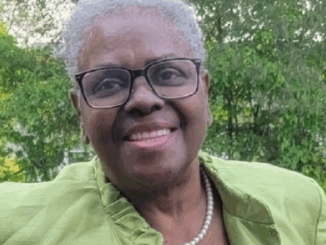
Waccamaw Siouan tribe marker to be set soon (see related story).
A culturally significant archaeological site in Robeson County soon will be recognized with a North Carolina Highway Historical Marker.
The marker commemorating the Buie Mound and the activism of Native people to protect the mound as a sacred site will be dedicated during a ceremony April 27 near the intersection of NC 710 and NC 72 south of Red Springs in Robeson County. The marker will be unveiled at 11 a.m., with a reception following at the Museum of the Southeast American Indian (1369 Old Main Rd., Pembroke, NC 28372) at 12:30 p.m.
The Buie Mound, thought to have been built between 1100-1500 C.E. by American Indian people as a temple mound, represents the presence of a highly sophisticated Mississippian moundbuilding society, according to archaeologists. Mounds were created to demonstrate social and rulership power by elevating structures, such as elite leaders’ dwellings and religious temples on the landscape, archaeologists say.
Although the traditional indigenous placename of Buie Mound is lost to time, the acknowledgement and historical significance of the mound still hold importance among Indian and non-Indian communities as a sacred place.
Formal archaeological digs began being conducted in the 1970s by St. Andrews Presbyterian College, Wake Forest University and Pembroke State University (the present-day University of North Carolina-Pembroke) on the land of John Todd Buie. Archaeologists uncovered multiple human remains and artifacts. Before then, the Buie Mound site attracted grave robbers and relic hunters who stole artifacts that included human bones and funerary objects. Archaeologists compiled a formal report called the “Buie Mound Report,” that concluded the site was linked to the early Woodland and late Mississippian moundbuilding eras.
In 1974, the local American Indian community sounded an outcry against the excavation of Buie Mound. This followed similar objections at Town Creek Indian Mound State Historic Site, another significant American Indian site near Mt. Gilead. These protests led to policy changes forbidding the exhibition and display of human remains at N.C. State Historic Sites.
The marker is one of nine markers being dedicated this year that highlight American Indian culture and history in North Carolina. Historical markers were approved for the Coharie, Haliwa-Saponi, Lumbee, Meherrin, Occaneechi Band of the Saponi, Sappony, and Waccamaw Siouan tribes.
In addition, historical markers were approved for the site of the East Carolina Indian School and the Buie Mound site. The N.C. American Indian Heritage Commission staff worked closely with N.C. tribes to complete applications to be considered for the historical marker program.
For more information about the historical marker and the event, please visit https://www.dncr.nc.gov/blog/2024/01/03/buie-mound-i-95, or call (919) 814-6625.
The Highway Historical Marker Program is a collaboration between the N.C. departments of Natural and Cultural Resources and Transportation.






















